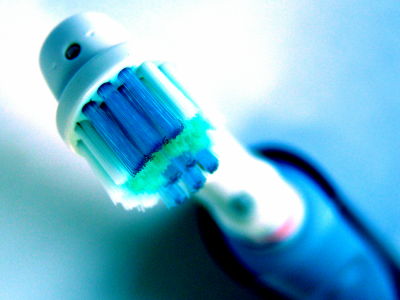The bed I usually use is like a 'petri dish' where microorganisms are growing, how can I keep it clean?

At the end of the day, wrapping yourself in a blanket in bed and laying your face on a pillow is a blissful time to relax both physically and mentally. However, in reality, the bed in which a person sleeps is like a '
Your bed probably isn't as clean as you think – a microbiologist explains
https://theconversation.com/your-bed-probably-isnt-as-clean-as-you-think-a-microbiologist-explains-163513
◆ Bacteria
Mr. Mohammed, 'Our beds are a wide variety of can be a bacterial species of the host' and has stated, in 2013, which examined the bed of the hospital (PDF file) study in, from a number of sample grapes It points out that staphylococci have been discovered. Staphylococci are usually harmless to humans, but invading the body through a wound can cause serious illness, and certain species of staphylococci are harmful to humans, Mohammed said.
Among them, Staphylococcus aureus is highly contagious and may cause skin infections, exacerbation of acne, pneumonia, etc. Staphylococcus aureus inhabits pillowcases and other areas, and studies have shown that some species are resistant to antibiotics.
Along with staphylococci, Escherichia coli and other gram-negative bacteria are also common bacteria in hospital beds. Gram-resistant bacteria are highly resistant to antibiotics and can cause serious infections such as urinary tract infections, pneumonia, diarrhea, meningitis, and sepsis, and Escherichia coli is also highly infectious and urinary tract. It may cause infectious diseases and diarrhea.
Of course, the environment is different between a hospital bed and a home bed. However, staphylococci and Escherichia coli also live in people's bodies, so if you do not wash your hands or wash your bedding after the toilet, these bacteria may grow in your bed at home. Seems to be enough.

◆ Insect
People are replacing old skin cells with new skin cells by metabolism, and it is said that 500 million skin cells are excreted per day only while sleeping in bed.
Also, referred to as a 'Bedbug' in English bedbugs (bed bugs) are also known as insect and easy breed in bed, saliva is injected at the time of sucking blood from human will cause intense itching. At the time of writing, there is no evidence that bed bugs carry infections, but itching can cause insomnia and mental health problems , Mohammed said.
In addition, although dust mites will die if the bed linen is washed and dried at about 55 degrees or higher, a specialist may be required to exterminate bed bugs.

by
◆ Bacteria in the home
In addition to bacteria derived from the human body, bacteria can be brought into the bed from household items such as clothing, towels, toilets, baths, kitchens, and pets. (PDF file) Bathrooms and kitchen towels can be hotbeds for Staphylococcus aureus and Escherichia coli, and improper washing can cause these bacteria to spread to bed sheets. In addition, Neisseria gonorrhoeae sexually transmitted infections of the infection to the causes gonorrhea (gonorrhea) also, that there is a possibility of infection through towels and bedding study are shown in.
Staphylococcus aureus can survive on cotton for one week, on toweling for two weeks, and fungi that cause urinary tract infections on fabric, although microorganisms survive on fibers for different periods of time. It will continue to survive for a month. Influenza virus can survive on fabric for 8-12 hours , and vaccinia virus can survive on wool or cotton for up to 14 weeks.

◆ How to keep your bed clean
Mohammed points out that proper and regular washing and bed linen changes are necessary to maintain bed hygiene. It is desirable to wash the bedding every week or more, and it is also recommended to change the pillowcase in 2 to 3 days. Washing bed linen at a high temperature of 40 to 60 degrees is effective for killing bacteria, and it is also important to use sufficient detergent and make sure that the linen is dry before use. Mohammed said. In addition, since the moisture accumulated while sleeping promotes the growth of microorganisms and mites, it is also effective to peel off blankets and duvets and expose the sheets to the air to remove the moisture.
Fragments of skin cells, food particles, fungi, etc. accumulate not only on sheets and pillowcases, but also on mattresses, but it is difficult to wash mattresses. Therefore, by using a mattress cover and washing the cover regularly, it is possible to suppress the growth of microorganisms. Mohammed also advises that cleaning the mattress and bed base monthly, turning the mattress over frequently, and replacing mattresses that have been in use for 10 years can help.
In addition, changing daily behavior can improve bed hygiene. 'If you take a shower before bedtime, avoid going to bed while taking a nap or sweating, remove makeup before going to bed, or avoid using lotion, cream or oil just before going to bed, you can wash your clothes. You can keep your linen clean in between. It's also helpful to stay out of bed, keep your pets away from the sheets, and take off your dirty socks before you go to bed, 'Mohamed said.

Related Posts:







